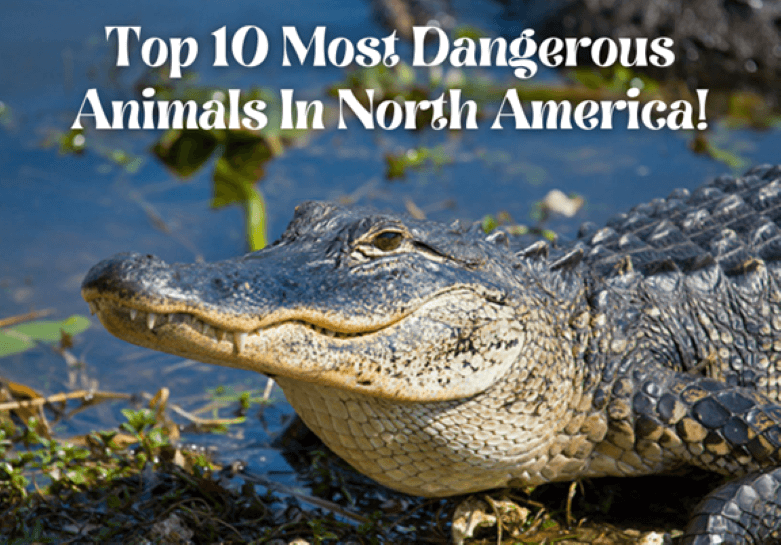As you hike throughout this vast continent, you may believe you are safe from wild animal attacks. And you’d be correct in comparison to Australia, where everything that moves is either poisonous or a kangaroo (or Paul Hogan); North America is very peaceful.
But there are still numerous animals, birds, and creepy crawlies that may injure or kill you if you make the wrong move – particularly if you like being outside. Below are the 10 most dangerous animals in North America, along with where you can find them, what you should know about them, and how to be safe if they happen to cross your way.
Top 10 Most Dangerous Animals In North America!
1. Dogs:
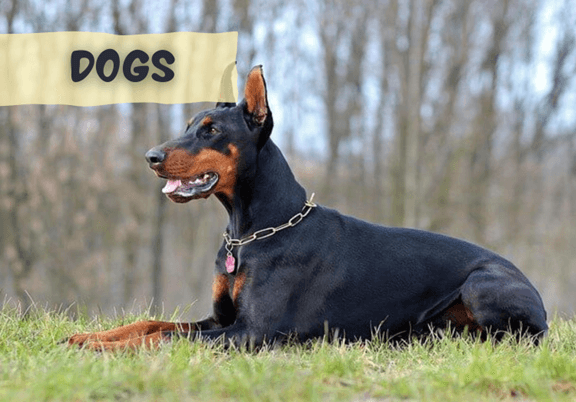
Dogs are by far the most dangerous animals in North America. A large number of people died as a result of dog attacks. While many people assume that so-called deadly breeds cause these events, the fact is that most dogs do not bite unless they are threatened or upset.
For example, while camping, children who play with dogs often touch the dog’s face, something the dog dislikes. The face is avoided in dog-to-dog encounters because it might easily spark an attack.
Lost dogs and those that past owners have abused are more inclined to bite out of panic. Burglars are more likely to be bitten since the dog is guarding their house and family.
Dog bites are also frequent when owners attempt to stop a fight between two dogs. It is usually unnecessary since bad dog-to-dog contact will resolve itself within seconds.
Attempting to separate two dogs in a defensive phase will likely end in a bite to yourself. When a dog is about to bite another, you may stop them by lifting its backside off the ground and turning them in a tight circle.
Fewer people would die due to dog attacks if humans were taught basic dog behaviour and body language. Dogs never bite unless they have no choice and cannot escape the environment or encounter that causes them this discomfort or dread.
2. Alligators & Crocodiles:
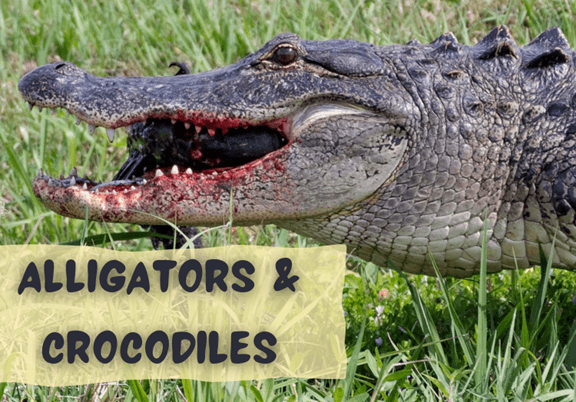
Crocodiles are massive semi aquatic reptiles found in the tropical areas of Africa, Asia, America, and Australia. The term “crocodile” is sometimes used broadly to refer to any member of the order Crocodilia, which encompasses the living caiman and alligator, the extinct false Gharial and Gharial, and everything in between.
Another exciting feature is that crocodiles’ lower and upper jaws are similar in size, and the teeth of the lower jaws are situated on the edges or outside of the jaws when closed. As a result, the teeth of all species are visible, unlike an alligator, which has little chambers on the upper jaw into which the lower teeth do fit.
The teeth are the ideal identifier for recognizing difficult specimens and defining their species and family. Crocodiles have more twisted toes on their rear foot and can handle seawater better due to unique salt glands that filter away the salt.
3. Mojave Rattlesnake:

The Mojave rattlesnake, sometimes known as the Mojave green, is the deadliest snake in North America. Big snakes may grow to be 4.5 feet long and are outstanding predatory animals due to their hidden brown-green pattern.
Mojave rattlesnakes are pit stalkers with very strong venom. The most severe threat is that symptoms might take hours, leading many victims to think that the bite was not severe.
The symptoms include shortness of breath, visual loss, difficulty talking or swallowing, muscular spasms or jerks, overall muscle weakness, and extreme pain. The poisons in the body will induce cardiac arrest or organ failure if antivenom is not given.
4. American Bison:
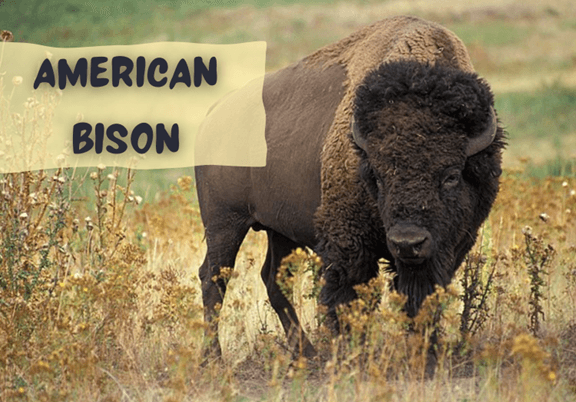
You’ll need help to identify an American Bison. Weighing up to 2,000 pounds, jumping 6 feet into the air, and charging at 40 miles per hour, you’ll recognize one when you come across it.
Bison are among the most deadly creatures found in North America. They’re the deadliest creature you’ll likely see in a National Park – maybe even deadlier than bears! Between 1980 and 1999, American Bison gored 79 people. Fortunately, only one person died, but we’re sure that the other 78 would warn you to keep out of a bison’s way.
If disturbed, bison will attack people. Humans have disturbed them quite a bit; there may have been as many as 60,000,000 in the United States before 1800, and there were just 300 by 1900. Today, that figure has risen to 360,000, yet it’s easy to understand why bison may not see humans as friends.
Bison safety is primarily a matter of common sense. Never go closer than 300 feet, even in your car. Give the bison lots of space and a way to escape if you come across them while trekking.
5. Deer:
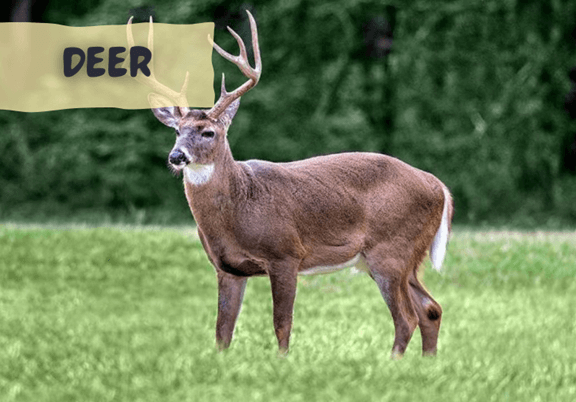
Despite its beauty, sweetness, and humility, the deer is one of North America’s deadliest animals. It is the most harmful to humans of all the wild creatures mentioned. Deer kill between 120 and 200 humans each year. It generally occurs when a deer leaps onto the road and gets struck by a car.
The driver loses control of the vehicle and crashes. In other circumstances, the driver loses control while attempting to avoid colliding with a deer, resulting in a tragic accident. It is common during the mating season because the bucks hunt them to mate with them. The shorter days of autumn correlate with the beginning of the breeding season.
Deer have also been known to attack humans. Stags in mating may gore humans with their horns, and even deer that don’t have horns can kick, stomp, and headbutt.
6. Sharks:
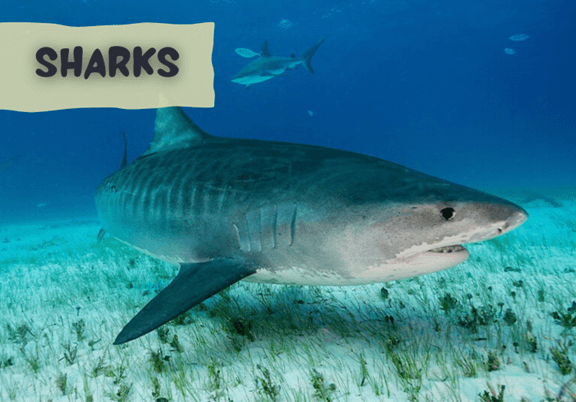
North America is often less risky than other places. We don’t have the most poisonous species (Australia) or the largest species (China) (Africa). This continent is generally friendly to human settlement.
We’re especially concerned about shark attacks, often off the shores of Canada and the United States. There have been 1,657 aggressive shark attacks in the United States since 1900, with 144 dead. And the situation isn’t getting any better: more interaction has resulted in increasing incidents over time.
It’s no surprise that shark attacks are so (relatively) common in the United States; great white sharks, tiger sharks, and bull sharks may all be found off North American shores. Bull sharks are reported to swim very long distances.
Sharks seldom eat human flesh because humans are a weak meal for predators of their size. The majority of shark bites are harmless acts of curiosity. It will likely determine you aren’t worth the difficulty and move on. Of course, a shark’s playful bite may be fatal to a person.
7. Venomous Snakes:
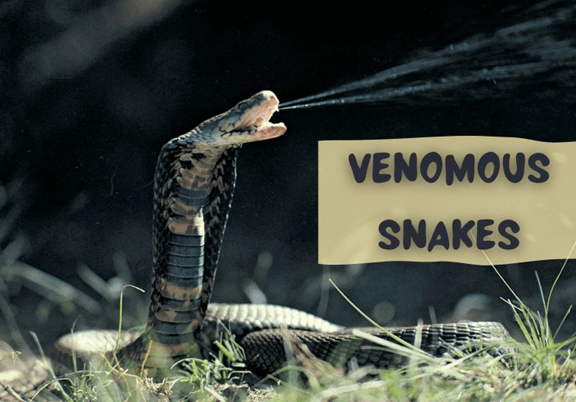
There are various venomous snakes in North America, including rattlesnakes, copperheads, cottonmouths/water moccasins, and coral snakes.
Every year, 7,000 and 8,000 individuals are bitten by venomous snakes in the United States. However, only around five of them died. Only approximately five individuals each year die from their bites because of advances in medicine. Still, many more suffer lifelong damage to the affected part of the body.
So, keep a reasonable level of fear, don’t pick up venomous snakes, and further reduce your risk of being bitten. You can read more on snakes in this article:” how to keep snakes away from campsites?
8. Grizzly Bears:
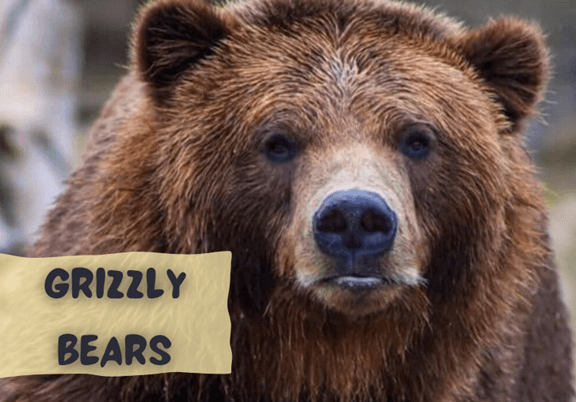
Alaska, Western Canada, and North America are home to grizzly bears, a subspecies of brown bear. Females weigh 500 pounds, but males may reach 900 pounds or more. With their big, strong bodies and razor-sharp claws, grizzlies should be avoided at all costs.
Every year, a few people are killed by bears in the United States. Females with cubs are responsible for the majority of grizzly attacks on people. Keep your distance from a mother bear with cubs in her custody; she will defend her youngsters.
You should remember a few things if you come into a grizzly (or any other bear). You will not be able to catch a bear, so don’t try, and you’ll only encourage it to come after you.
Don’t yell. Instead, use calming words and gestures to show the bear that you are human and not food. Make no eye contact. If the bear isn’t approaching you, walk back slowly, if you are attacked, pretend to be dead and remain silent until the onslaught is over. Camping in the bear area requires adequate food storage and bear-proof trash cans to prevent contact with grizzlies and other bear subspecies. Hiking in groups may also help to prevent attacks.
9. Bees, Hornets, And Wasps:
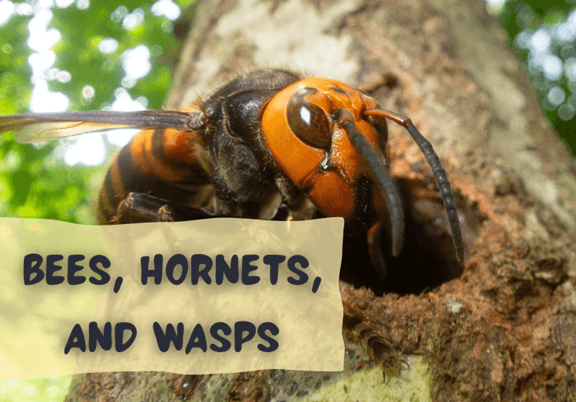
Bees, hornets, and wasps are the next harmful species on this list. Most people are afraid of them because of their unpleasant sting, but those who are allergic should be very cautious.
Every year, 70 people die from allergic responses to bees, hornets, or wasp stings. Anaphylaxis occurs in those who are allergic to insect poisons. Toxins from insect stings induce tongue and throat swelling, making breathing difficult.
Other signs include eyelid swelling, an itchy rash, nausea, vomiting, low blood pressure, and shock. If you want to know more about bears: “” Bear Proof Container For Camping! Here’s The Truth!
10. Cows:
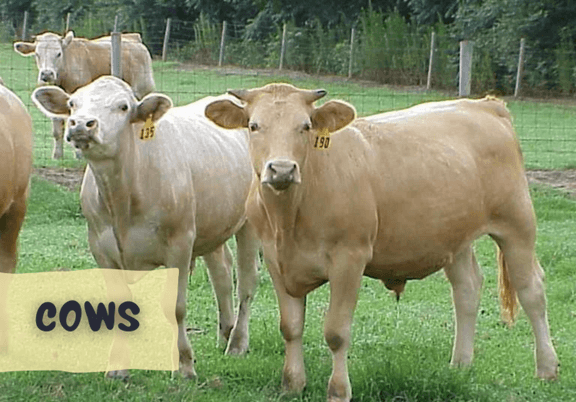
The most unexpected element on this list is that cows kill more people than alligators and sharks. Between 2003 and 2007, 108 people were killed by cows in Nebraska, Missouri, Iowa, and Kansas. Most of these were caused by farm workers caring for cows and herding them between grazing pastures. However, others were caused by members of the public trying to cross fields.
The thoracic and cerebral regions, as well as the feet, are common targets for deadly kicks. Cows are responsible for up to 30 human deaths each year. The most typical cause for aggressive behaviour in cows is to defend their calves.
Approaching a cow during the mating season is incredibly challenging since they are experiencing heightened hormone levels and are frequently irritated.
Additional Resources
If you are looking for more tutorials, walkthroughs and troubleshooting about camping and enjoying the outdoors, here are some additional posts to check out:
Conclusion:
I hope these suggestions help you remain safe on your travels around North America. Hikers and backpackers need to understand what danger looks like, how to avoid it, and what to do if it does appear. Thanks for reading! If you think I forgot something or if you simply want to share a story or some advice, feel free to leave your comment below. Be safe and have fun.!

